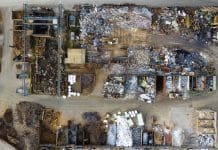New measures to improve ventilation, indoor air quality (IAQ), and tackle overheating as part of revisions to the Building Regulations are welcomed by BESA
The proposed changes will come in next June and aim to reduce carbon whilst offering improved IAQ in both residential and commercial buildings.
In order to meet the requirements of the revised Part L, there will have to be some significant carbon emission reductions in buildings – 30% in new homes, and 27% in non-domestic buildings.
This is considered the first step towards ensuring that all buildings are ‘net zero ready’ from 2025 because this is when the Future Buildings Standard comes into effect.
Furthermore, under changes to Part F and with the introduction of Part O, all new residential buildings, care and children’s homes, and student accommodation, must include in their designs ways to reduce overheating.
To reduce the spread of airborne viruses, such as coronaviruses, and improve IAQ better ventilation must be introduced.
This includes improved standards for recirculating ventilation systems in new offices and the compulsory installation of CO2 monitors.
Trickle vents will likely be introduced in all replacement windows.
A new method for ensuring that ventilation is not compromised when energy efficiency improvements are carried out in existing buildings is another proposed measure.
‘A good start’ to improving IAQ
BESA’s head of technical Graeme Fox has made the following comments:
“This is a good start on the road to tackling poor indoor air quality.
“Monitoring CO2 levels is a simple, low-cost way to measure ventilation effectiveness, but eventually we will need more comprehensive monitoring of airborne contaminants, including PM2.5 and NO2, to help building managers properly get to grips with the air quality challenge.
“It is very good to see, however, that the government has been clear about the importance of not sacrificing ventilation in a bid to cut carbon.
“There is no point having highly energy efficient buildings that are harmful to occupant health – a mistake that has been made in the past.”
Hazardous substances
The government has also referenced the Guide to Good Practice for Local Exhaust Ventilation (LEV) produced by BESA in partnership with the Institute of LEV Engineers (ILEVE) in the revised Part F.
Published last year, this guidance has already been widely praised for helping to protect people against exposure to hazardous substances in workplaces.
Fox added:
“Instances of occupational lung diseases, including cancer, caused by dust, fumes and other airborne contaminants in the workplace are still far too high.
“Compliance with TR40 could also help employers save thousands of workers every year from succumbing to industrial asthma, chronic obstructive pulmonary disease (COPD) and life limiting respiratory conditions in workplaces subjected to high levels of airborne contaminants.”













